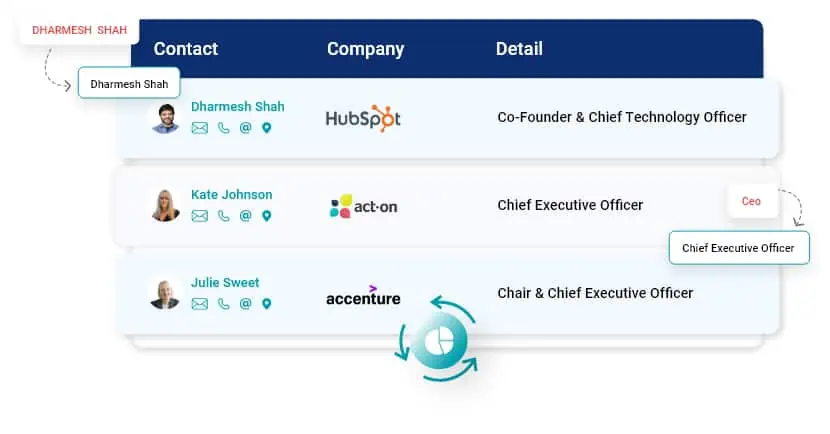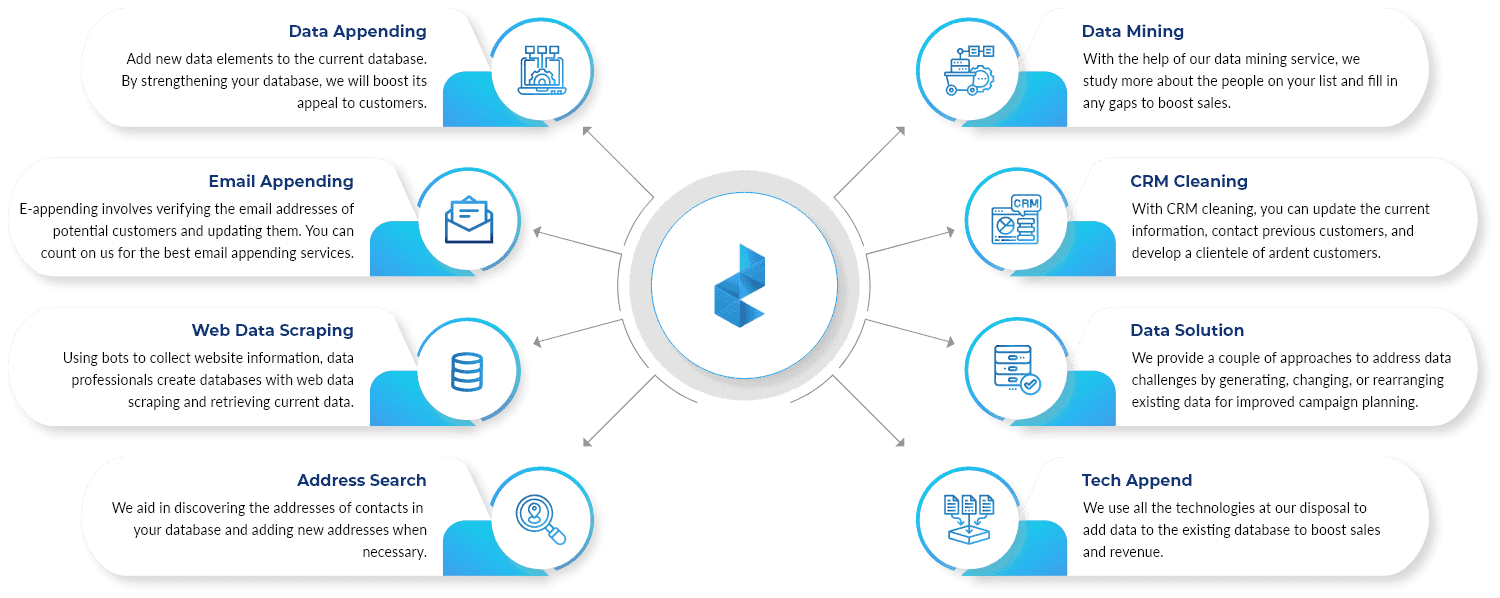Identify and eliminate inaccurate and outdated data using DataCaptive’s data cleaning services and gain elevated ROI.


Businesses rely heavily on their contact databases. It requires constant attention and management to keep it updated. To maintain high standards, data cleansing is vital as it identifies inaccurate data and updates it. Professionals can modify their data management strategies and increase sales with the help of our data cleansing services.
We provide data hygiene for B2B prospects by cleaning, standardizing, formatting, deduplicating, verifying, and validating essential data through the latest systems, software, and techniques. We utilize a modernized, current-technology data-scrubbing process to enhance the quality, relevance, and efficiency of your B2B marketing process.

Let Our Data-scrubbing Services Do Wonders While You Create Strategies to Market Products and Solutions

Scrutiny and Validation of Data

Name, Gender, and Salutation Correction

Detect and Correct Email Addresses

Cleansing of Mailing Lists

Enhanced Categorization and Validation of Phone Numbers

Normalization and Standardization of Data
Enhance output by engaging with DataCaptive through various related services.

Data cleansing ensures that the existing database is cleaned and updated to generate leads and make successful sales.
The data is sent as a .xls or .csv file that can be integrated easily into preferred CRMs or cloud-based applications to access it and make great business happen.

